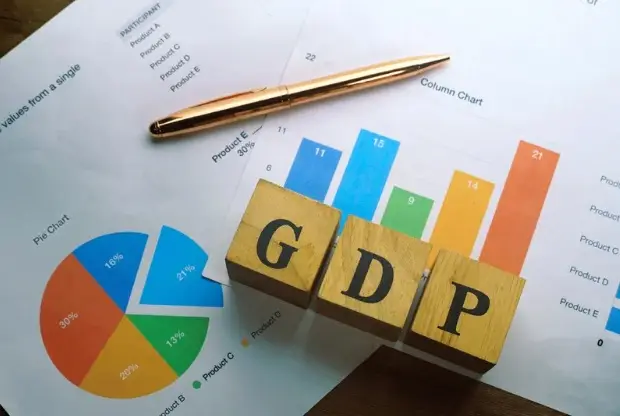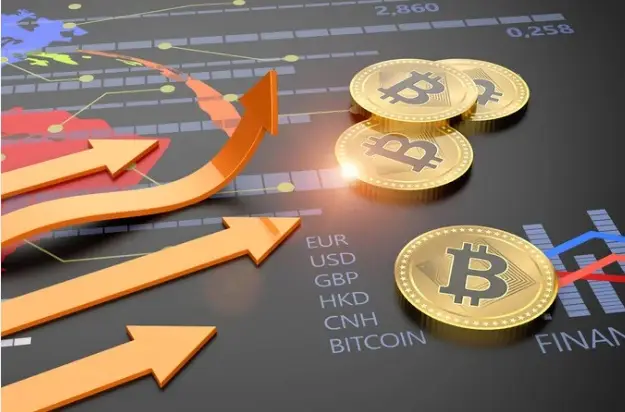Exploring Gdp – Deleted Scene – E355: An In-depth Look

Gross Domestic Product (GDP) is one of the most significant measures of economic activity used globally to assess the health of a nation’s economy. It sums up the total value of all goods and services produced within a country during a specific period. However, some complexities go beyond the traditional interpretation of GDP, and these intricacies are highlighted in the deleted scene E355.
This scene from a popular economic documentary sheds light on various factors that traditional GDP calculations tend to overlook. In the following article, we will break down both GDP’s role and why this deleted scene has become a subject of renewed interest, touching on its deeper insights into economic measurement.
Components of GDP: What Makes It Up?
The main components of GDP include:
Consumption
Consumption means how much stuff people buy and use. This includes things like food, clothes, toys, and services like getting a haircut or going to the doctor. When families spend their money on these items, they are making consumption happen. It shows how people are using their money to buy things they need or want.
The more families buy, the better it is for the economy because it helps businesses grow and create more jobs. When people consume a lot, it can also help companies to make better products since they know what customers like.
Investment
Investment is when people or companies spend money to buy things that will help them make even more money in the future. This includes things like buying machines, tools, or buildings. For example, if a company buys a new computer that helps them work faster, that’s an investment. It’s not just spending; it’s spending with a plan.
The idea is that by spending money now on these essential items, businesses can produce more things and earn more money later on. This helps create jobs and makes the economy stronger. When companies invest, they can grow and provide better services to everyone.
Government Spending
Government spending is the money that governments use to pay for things that help the community and the country. This includes building roads, schools, parks, and hospitals. It also covers salaries for teachers, police officers, and firefighters. When governments spend money on these services, it helps everyone in the community.
For example, when a new school is built, kids have a place to learn. Government spending is important because it helps improve our lives and makes sure that we have the services we need. It can also help create jobs for people in the community.
Net Exports
Net exports tell us how much money a country makes by selling things to other countries compared to how much money it spends buying stuff from them. If a country sells more than it buys, it has a positive net export, which is a good thing. For example, if a country sells a lot of toys to other countries but only buys a few things, it means it is making money.
On the other hand, if a country buys more than it sells, it has a negative net export. This can affect jobs and how much money a country has. Net exports are important because they show how well a country is doing in trade and help balance its economy.
These components come together to provide a snapshot of the overall economic activity. The deleted scene from E355 goes beyond just these basics, focusing on hidden layers of economic activity that traditional GDP measures may miss, such as informal economies and other non-market transactions.
The Context and Relevance of Scene E355
Scene E355 delved into the complexities of GDP in a way that traditional coverage typically avoids. It focused on the nuances of how GDP is calculated and how various factors, such as technological innovation, demographic changes, and global trade, can skew the data.
For instance, technological advances, like the rise of the digital economy, present new challenges in capturing economic activity, as they sometimes need to be fully reflected in GDP figures. Similarly, demographic shifts or informal sectors of the economy, like unregistered work, might need to be accurately accounted for, resulting in an incomplete picture of national prosperity.
The scene also highlighted methodological challenges that could result in discrepancies in GDP data. Different countries use varying methods to calculate GDP, and changes in those methods over time can make it difficult to compare figures accurately across countries or periods. This is crucial because GDP data influences everything from government policy to international investor behaviour.
Why Was This Scene Deleted?
The scene was likely cut for editorial reasons, perhaps due to time constraints. However, the depth of analysis it offered on GDP calculation remains relevant. Breaking down these additional layers of economic activity provided a more nuanced view of how we measure financial health and what factors might go unnoticed.
The Impact of External Factors on GDP
The scene also sheds light on the influence of external factors, such as global trade and demographic shifts. Changes in population demographics, for instance, can affect consumption patterns and labour force participation, both of which directly influence GDP. Similarly, fluctuations in international trade, driven by tariffs, embargoes, or shifts in global demand, can also cause GDP figures to fluctuate.
In essence, E355 challenged the idea that GDP is a straightforward or fully comprehensive measure. It revealed how many external factors play a significant role in shaping the economy in ways that might not be immediately apparent in GDP calculations. For example, the digital economy is increasing, yet it cannot be easy to account for online services and digital products in traditional GDP metrics.
The Challenges in GDP Measurement
One of the key points made in the deleted scene was the difficulty in ensuring the accuracy of GDP data. Data collection methods differ from country to country, and revisions to GDP figures are common, sometimes occurring long after the initial estimates are released. This can create a challenge for both policymakers and investors, who rely on GDP data to make informed decisions.
Additionally, traditional GDP measures may fail to capture the full extent of modern economies, especially with the rise of the digital economy and informal sectors. These activities can be challenging to quantify, yet they are becoming increasingly important in the overall economic landscape. For example, digital services like streaming platforms, apps, and online retail contribute significantly to national economies, yet they can be difficult to assess using conventional methods.
The Role of Technology in Enhancing GDP Measurement
Technological advancements are helping to address some of these challenges by improving data collection methods and making it easier to track economic activity in real time. Big data and machine learning, for example, allow for more precise forecasting and analysis, helping economists get a better sense of the true state of the economy.
In the future, these technologies may lead to new ways of measuring economic activity that go beyond traditional GDP. This would provide a more accurate and comprehensive picture of national and global economic performance, making it easier for policymakers and investors to make informed decisions.
Conclusion About Gdp – Deleted Scene – E355
The deleted scene E355 offers valuable insights into the limitations of traditional GDP metrics. It highlights the importance of considering external factors, hidden layers of economic activity, and the challenges in accurately measuring modern economies. As we move forward, it is essential to continue refining our methods for tracking economic activity to ensure that we have the best possible understanding of national and global economic performance. If you also want to read about Kristen Archives then visit that post.
FAQs
What is GDP?
GDP stands for Gross Domestic Product. It is the total value of goods and services produced within a country during a specific period, used to measure the economy’s health.
Why was scene E355 deleted?
Scene E355 was likely removed due to time constraints, although it contained valuable insights into the complexities of GDP measurement.
How do external factors impact GDP?
External factors, such as technological advances, demographic changes, and global trade, can significantly affect GDP figures, sometimes in ways that traditional metrics don’t fully capture.
Why is it important to consider the limitations of GDP?
Understanding GDP’s limitations is crucial for making informed policy decisions and accurately assessing a country’s economic health.
How can technology improve GDP measurement?
New technologies like big data analytics and machine learning can enhance the accuracy of GDP measurements by providing real-time data and better tracking of economic activities.





